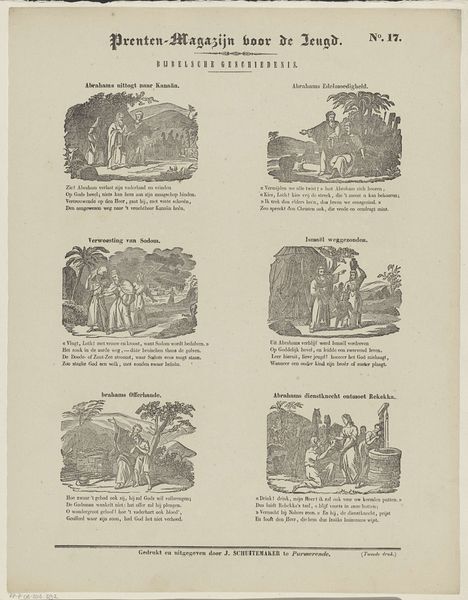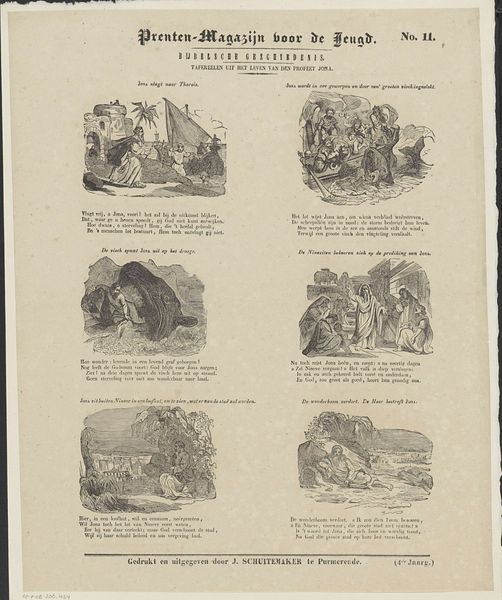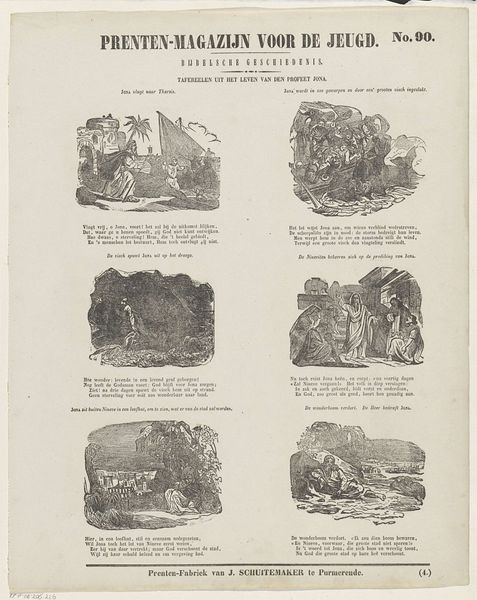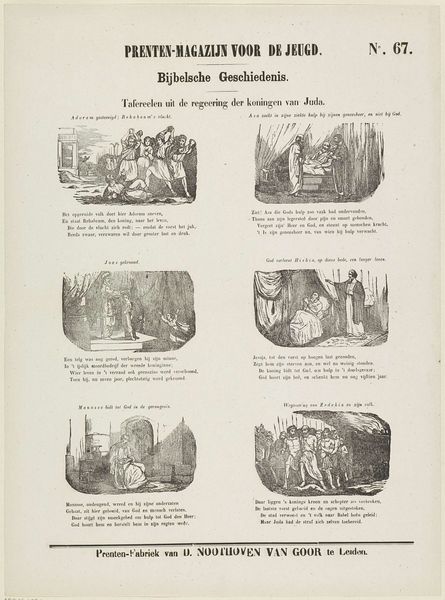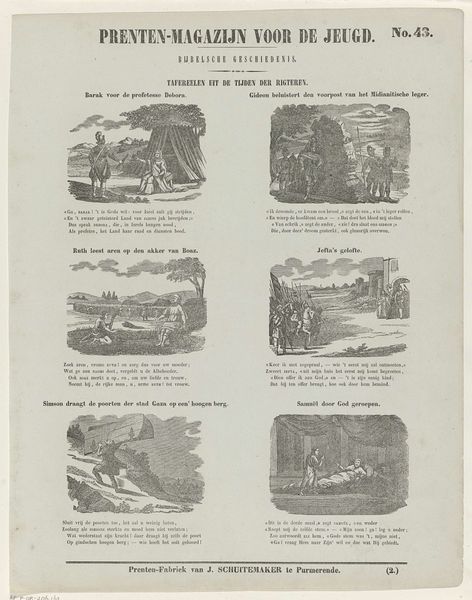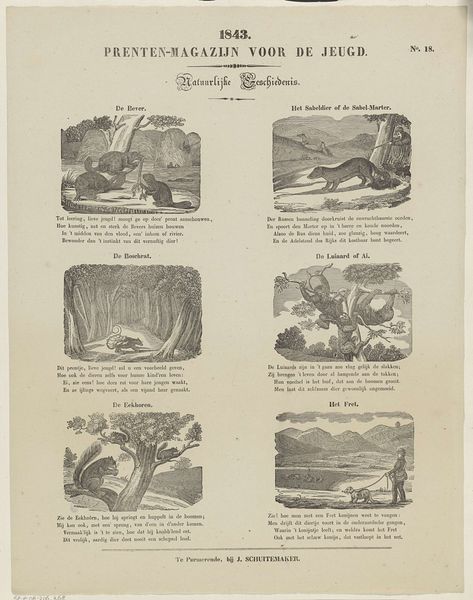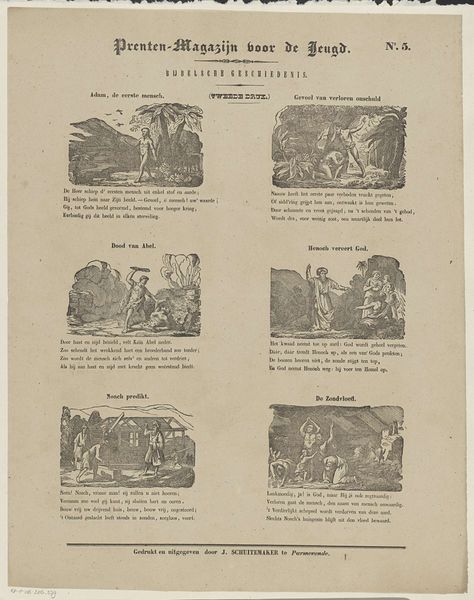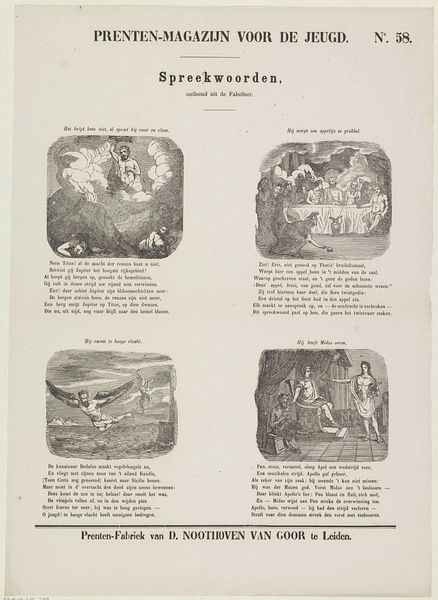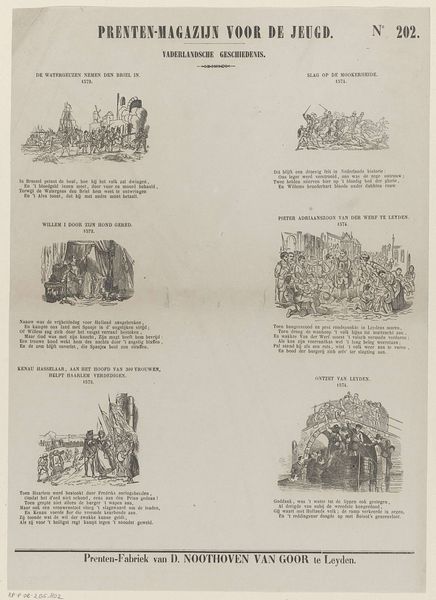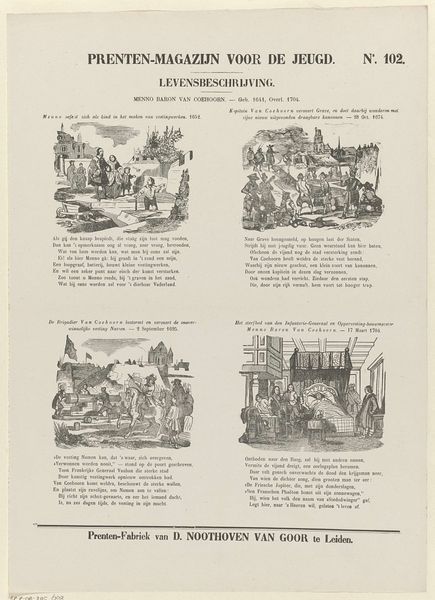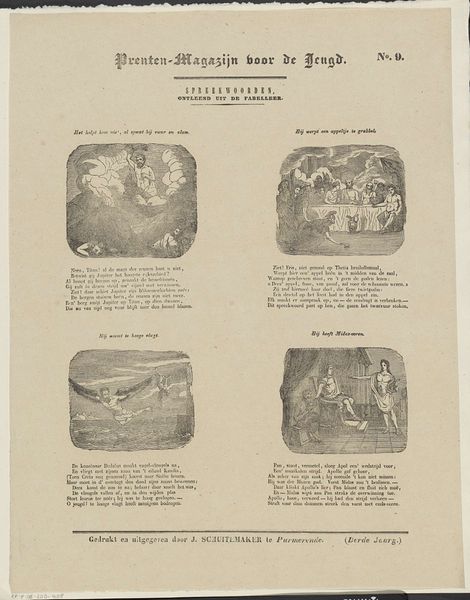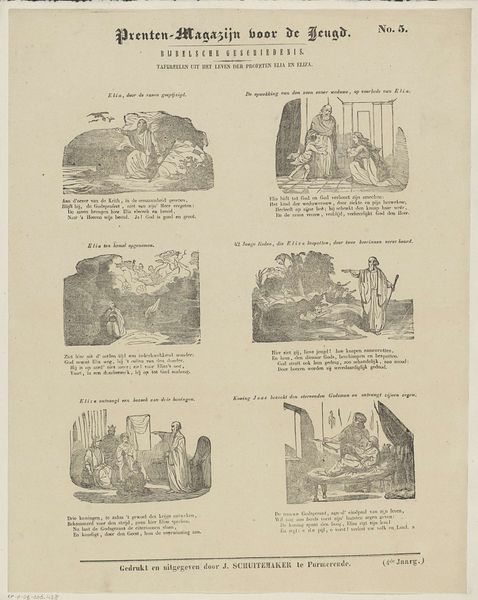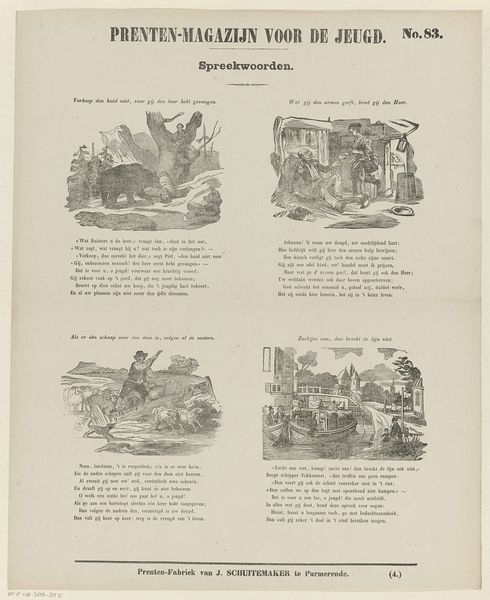
drawing, print, paper, woodcut
#
drawing
#
medieval
#
narrative-art
# print
#
paper
#
woodcut
#
genre-painting
Dimensions: height 410 mm, width 329 mm
Copyright: Rijks Museum: Open Domain
Curator: So, here we have "Verhaal van Mozes," a woodcut print on paper by Jan Schuitemaker, dated 1850. It's quite interesting how these six vignettes depicting scenes from Moses’ life are laid out. My first thought is how the materiality of the print—the very woodcut technique—lends it a certain feel, doesn’t it? What strikes you about it? Editor: The stark contrast and almost cartoonish style remind me of medieval woodcuts, with these dramatic depictions of Biblical stories. It seems like a simple enough medium. How would this have been consumed back then? Curator: Precisely. This wasn't high art for a wealthy patron. This was a print made in a "Prenten-Fabriek," as it states at the bottom – a print factory – aimed at a youthful audience, “voor de Jeugd”. Consider the means of production. It would likely have been created by skilled laborers churning out copies for mass consumption. Think of the role this plays in disseminating religious stories. How does this commercialization impact the perceived value or authenticity of the religious narrative? Editor: I never thought about it that way. Seeing it as a product of a factory, intended for children... Does it change the artistic intent? Curator: "Artistic intent" is a tricky thing here. Was it about aesthetic expression? Or was it about conveying religious lessons and, perhaps, boosting the print factory’s profits? Look closely at the varying skill across panels, likely due to multiple hands in its making. Does that change how we traditionally assess the piece as art? Editor: I see your point. Thinking about it not just as a piece of art but as a manufactured object for children completely changes how I view the image. The labor and production suddenly become the most interesting parts! Curator: Exactly! By examining the means of production, the intended audience, and the social context, we gain a richer understanding beyond just the religious narrative it depicts. It challenges that division between "high" and "low" art. Editor: That’s a fascinating perspective. Thanks for pointing out the material and production side of things; I’ll definitely look at art differently from now on.
Comments
No comments
Be the first to comment and join the conversation on the ultimate creative platform.
